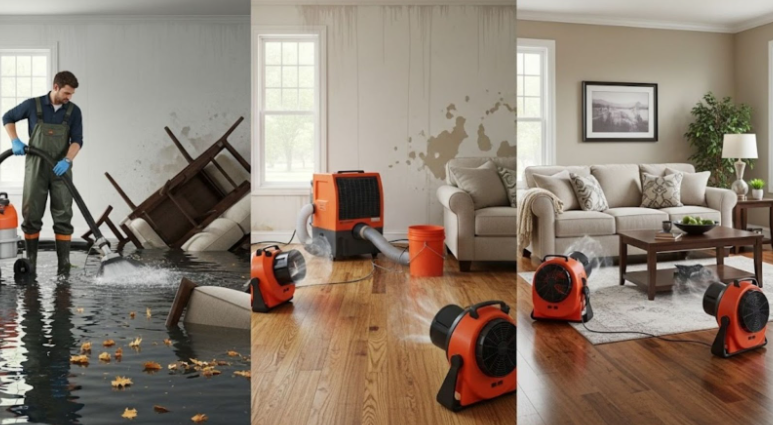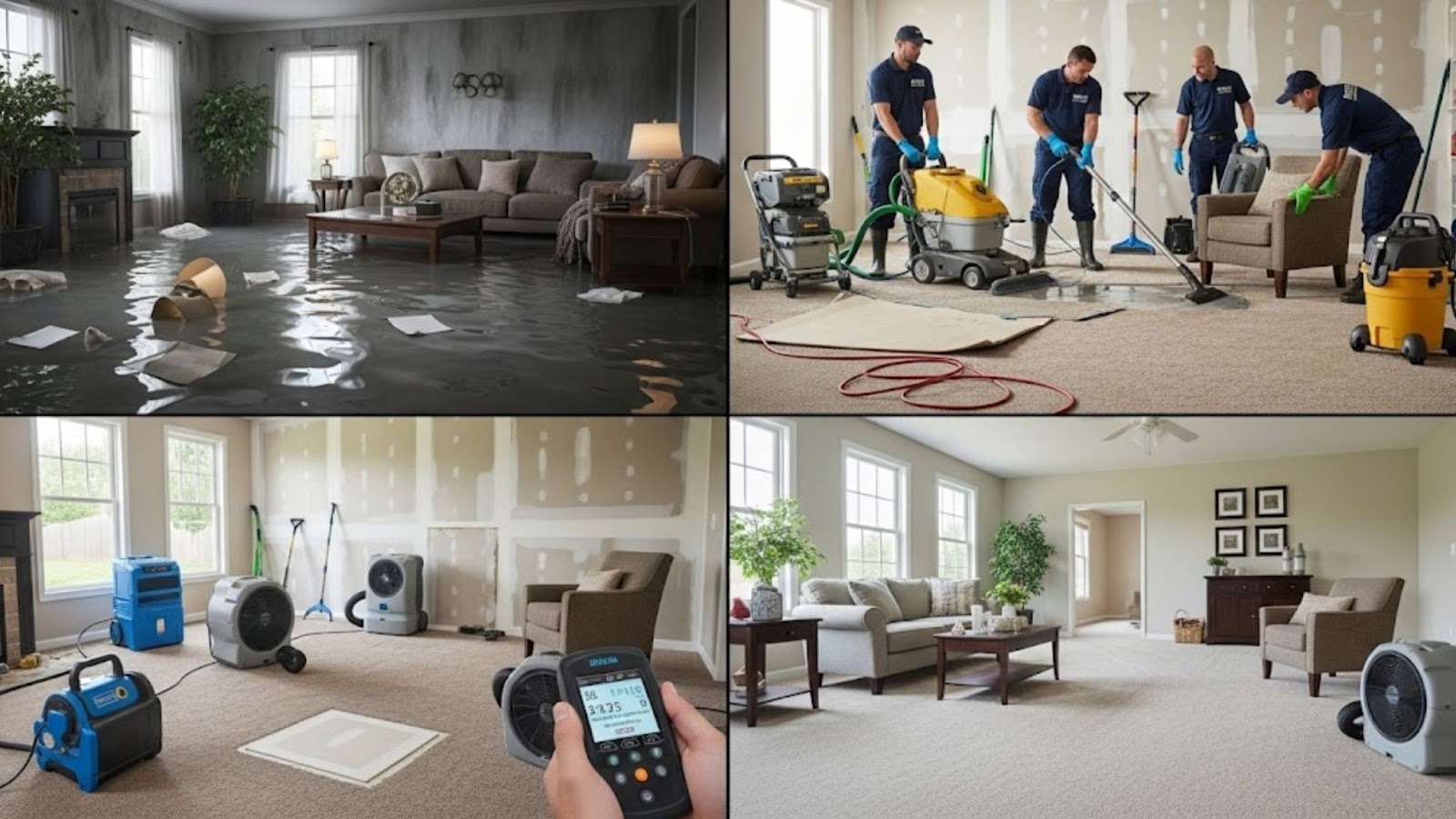
Water intrusion can transform a safe, dry space into a hazard zone almost instantly. Understanding what unfolds during Water Damage Restoration Services empowers property owners to anticipate each phase, from initial assessment through full reconstruction. This guide outlines the essential procedures that certified technicians undertake when responding to water emergencies. By demystifying the restoration journey, readers gain clarity on the roles of moisture detection tools, extraction equipment, and environmental controls. Most importantly, familiarity with these steps aids in seamless collaboration between homeowners and professionals when mitigating water-related disasters.
Water Damage Restoration Services unfold through a structured sequence of actions, each designed to stop further deterioration and rejuvenate affected areas to their pre-loss condition.
During the first onsite visit, restoration specialists conduct a meticulous inspection to determine moisture migration and contamination levels. They identify the water source—whether burst pipes, appliance leaks, or natural flooding—and classify the water type as clean, gray, or black. Using moisture meters and infrared cameras, technicians detect hidden water behind walls, under flooring, and within structural cavities. Detailed documentation, including photographs and diagrams, supports insurance claims and shapes the tailored restoration plan.
Once the assessment is complete, the priority shifts to rapid water removal. Professionals deploy high-powered submersible pumps and truck-mounted extractors to eliminate standing water. Wet/dry vacuums and portable tanks address smaller or hard-to-reach pockets. Prompt extraction curtails the risk of mold growth and minimizes structural compromise. Carpets are lifted, baseboards removed, and soaked materials extracted to ensure thorough water removal. The choice between gas-powered pumps and vacuum systems hinges on the water depth and accessibility of the affected area.3
Specialists rely on the water extraction process to reclaim inundated spaces swiftly. Combining high-capacity pumps with industrial-grade vacuums, they extract up to thousands of gallons per hour. Precision moisture meters guide technicians to residual damp spots that equipment alone might overlook. This systematic approach mitigates microbial proliferation and structural decay, laying the foundation for effective drying and dehumidification stages.
After visible water is gone, residual moisture lingers in walls, flooring, and indoor air. Restoration teams introduce high-velocity air movers and industrial dehumidifiers to evaporate and remove this trapped water. Air movers circulate dry air across surfaces, while dehumidifiers extract water vapor, reducing indoor humidity to safe levels. Technicians reposition equipment based on daily moisture readings and environmental data. Consistent monitoring ensures no wet zones remain within wall cavities or beneath subfloors, preventing mold outbreaks and long-term warping.
Dry conditions reveal residues left behind by contaminated water, whether from gray-water appliances or black-water backflow. In this phase, specialists apply antimicrobial treatments and disinfectants across floors, walls, and salvageable contents. Sensitive items like upholstery, curtains, and important documents undergo on-site or off-site content cleaning protocols. Ozone generators or hydroxyl machines may be introduced to neutralize stubborn odors. This rigorous sanitation step safeguards occupants against bacteria, allergens, and fungal threats.
Rebuilding trust after water damage hinges on timely action. Many restoration firms offer a Rapid Response Guarantee that promises arrival within hours of a service call. Swift mobilization not only halts further damage but also delivers peace of mind to homeowners navigating a stressful crisis.
Moisture control alone cannot guarantee mold-free environments if spores have already taken hold. Restoration experts inspect for visible mold patches and use ERMI (Environmental Relative Moldiness Index) testing where needed. Containment barriers and negative air chambers prevent cross-contamination during mold removal. HEPA vacuums and antimicrobial sealants target both surface colonies and embedded hyphae within porous materials. Ongoing humidity checks confirm that indoor conditions remain inhospitable to future growth.
With microbial risks neutralized, the final phase focuses on restoring the property’s structural integrity and aesthetic appeal. Damaged drywall sections are removed and replaced, subfloors are repaired, and necessary carpentry tasks—such as reframing—are completed. Painting, trim installation, and finishing touches return rooms to a move-in ready state. Licensed contractors collaborate under the restoration firm’s supervision to ensure code compliance and deliver a seamless handover.
A cohesive Disaster Response Team coordinates these multifaceted tasks, drawing from water mitigation specialists, licensed contractors, and environmental hygienists. Their combined expertise streamlines every step, from emergency extraction through final rebuild, under a unified project plan.

The duration of water restoration varies widely based on damage severity, affected square footage, and water category.
Minor clean-water events spanning a single room may conclude in just 2–4 days, whereas large-scale flood recovery can stretch over several weeks. If water intrusion has compromised hidden cavities or structural elements require teardown, additional days for reconstruction become necessary. Mold remediation, specialty odor removal, or intricate content restoration further extend timelines.
Technicians log daily moisture readings and equipment run-times, adjusting strategies dynamically to accelerate the drying process without sacrificing thoroughness. Transparent progress reports keep property owners and insurance representatives informed, ensuring expectations align with on-site realities.
Efficient handling of documentation, estimates, and direct communication with insurers expedites approvals for reconstruction budgets, minimizing project delays. Daily logs, moisture maps, and before-and-after photographs substantiate claims, preventing unforeseen hold-ups.

Selecting an experienced provider ensures your property is entrusted to certified professionals who follow industry best practices.
Look for firms with IICRC (Institute of Inspection Cleaning and Restoration Certification) credentials in water damage restoration and applied microbial remediation. Trained staff possess up-to-date knowledge of extraction equipment, drying science, and health-safe cleaning protocols.
A “restoration company near me” offers quicker response times and regional expertise in common local water issues—such as monsoon-related flooding in certain climates or winter pipe bursts in colder regions. Proximity also simplifies on-site supervision and follow-up visits.
Check independent reviews on platforms like the Better Business Bureau, Google, and industry-specific forums. Word-of-mouth referrals from neighbors or local trade professionals yield firsthand insights into service quality and project outcomes.
For a tailored consultation with certified technicians in your community, Contact us to schedule a free damage assessment and learn how professional water mitigation can protect your property’s value.
Attempting DIY teardown and drying risks incomplete remediation, hidden moisture retention, and non-compliance with health standards.
Professionals wield truck-mounted extractors, commercial dehumidifiers, and thermal imaging tools that far surpass consumer-grade rentals. Their industrial strength and precision deliver comprehensive moisture control.
Technicians adhere to OSHA guidelines for electrical safety around wet environments and use personal protective equipment during black-water cleanup. Proper disposal of contaminated materials and controlled demolition practices eliminate health hazards.
Reputable firms back their work with service guarantees, assuring homeowners that thorough drying, sanitization, and reconstruction will restore living spaces to code-compliant, hazard-free conditions.
Restoration relies on a synergy of specialized tools and scientific methodologies.
Devices like pinless moisture meters, hygrometers, and infrared cameras reveal moisture concentration gradients within building materials. Early detection prevents hidden decay.
High-velocity air movers create directional airflow across wet surfaces, while desiccant and refrigerant dehumidifiers extract ambient moisture. PSI-rated structural drying systems target saturation in wood framing and foam insulation.
In complex water emergencies, entrusting professional Water Damage Restoration Services ensures a scientifically backed, comprehensive revival of your property. From initial inspection to final finishing touches, every step merges advanced equipment, certified expertise, and unwavering attention to health and safety. Whether facing a minor leak or catastrophic flooding, adhering to best practices and leveraging a capable restoration partner can save time, money, and stress.
ReBuilders Commercial Restoration stands ready to apply ten years of industry-leading experience to return properties to their optimal state. Contact our certified Disaster Response Team today for a prompt, expert solution to any water damage challenge.
Clean water comes from sanitary sources like broken supply lines and poses minimal health risk. Gray water originates from appliances and may contain chemicals or organic matter. Black water includes sewage and floodwaters, demanding full containment and disinfection.
Occupant safety depends on damage category and project scope. Clean-water restoration may allow limited access, while gray or black-water scenarios often require vacating the premises until sanitization and drying are complete.
Immediate action—ideally within four hours—curtails mold growth and structural compromise. A Rapid Response Guarantee ensures teams arrive promptly to start the mitigation process.
Incomplete drying can trap moisture in wall cavities or subfloors, creating ideal conditions for mold proliferation. Certified technicians monitor moisture until material readings fall within safe thresholds.